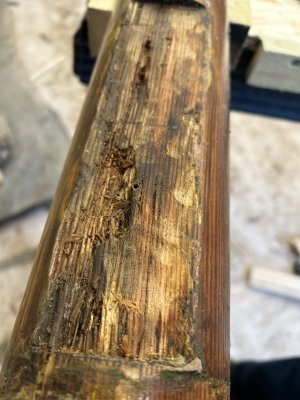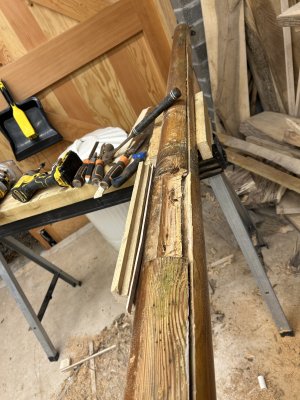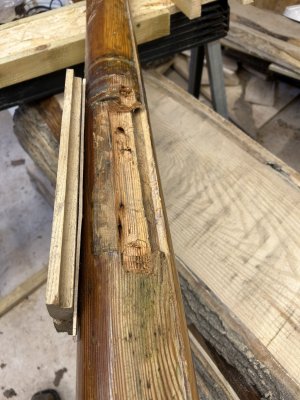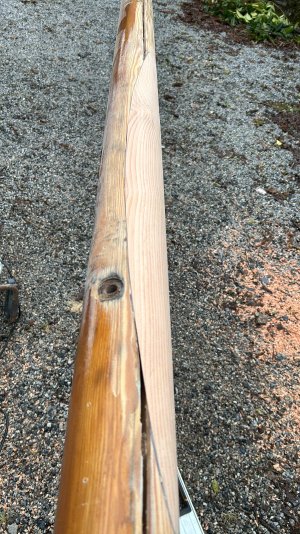bins73
New member
Hi. I’m after some advice please. I have a solid, Douglas mast of around 17’, with a constant diameter of 4”. Approximately 5’ from the top is an area of rotten timber, associated with screws which held the hounds on, just below the point where the shrouds were secured with loops around the mast.
I have routed out the wet wood, and was planning on scarfing and epoxying in a replacement piece.
My question is, will this repair be likely to return the mast to its original strength (assuming that the wet wood has been giving no structural strength for the last few seasons), or is the depth of the repair sufficient to write the mast off - would I be better to simply replace the mast? Is the lateral force on the mast, just below the shroud attachment significant (I assume it’s balanced by the contralateral shroud), and therefore is this an area of the mast that is even more critical?
I’ve attached some photos of the hound seating, the rotten wood as it was, and the area after removal of the bad wood. There is a bit more to remove below the defect (pencil mark), which in hoping will be part of the tapered shoulder of the scarf.
The depth of the defect is about 1&3/16th”
I’d be grateful for any thoughts as you might have.
Thanks
Sam
I have routed out the wet wood, and was planning on scarfing and epoxying in a replacement piece.
My question is, will this repair be likely to return the mast to its original strength (assuming that the wet wood has been giving no structural strength for the last few seasons), or is the depth of the repair sufficient to write the mast off - would I be better to simply replace the mast? Is the lateral force on the mast, just below the shroud attachment significant (I assume it’s balanced by the contralateral shroud), and therefore is this an area of the mast that is even more critical?
I’ve attached some photos of the hound seating, the rotten wood as it was, and the area after removal of the bad wood. There is a bit more to remove below the defect (pencil mark), which in hoping will be part of the tapered shoulder of the scarf.
The depth of the defect is about 1&3/16th”
I’d be grateful for any thoughts as you might have.
Thanks
Sam





